Crack the code of collective nouns with our intriguing exploration of what a group of beakers is called.
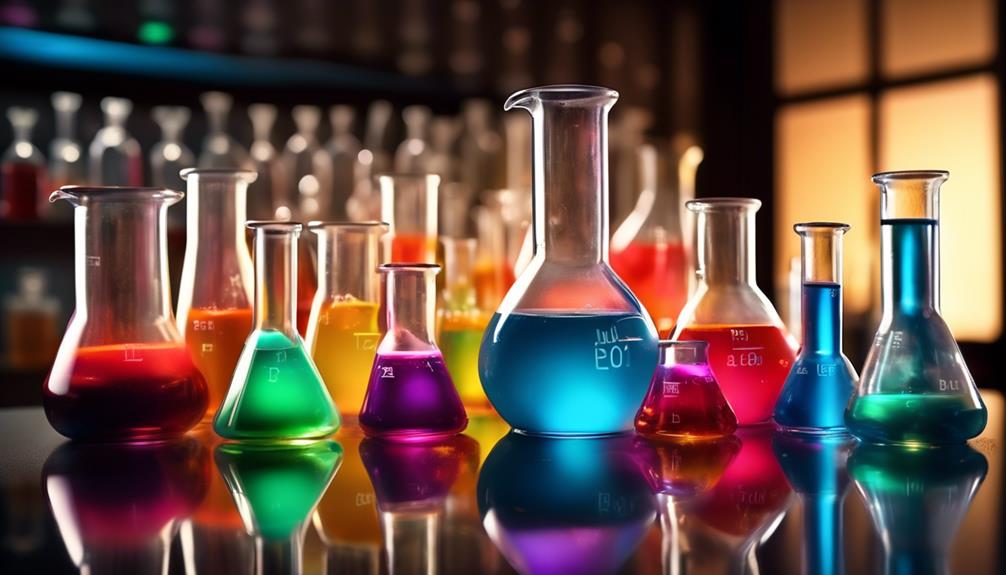
Collective Noun for Beakers
Have you ever pondered over what a group of beakers is called? It’s not something you’re likely to stumble upon in your everyday conversations, but it’s definitely interesting and somewhat puzzling.
As you navigate the intriguing world of collective nouns, you’ll find that many are derived from our observations of nature, historical contexts, and even whimsical human creativity.
Now, when it comes to beakers, a staple of any scientific laboratory, what could possibly be the collective noun? Well, you’re about to uncover something that might just add a little more color to your scientific vocabulary. So, stick around, you wouldn’t want to miss this intriguing nugget of information.
Key Takeaways
- Collective nouns represent a group or collection of people, animals, or things considered as a single entity.
- The word ‘beaker’ has its origins in the Old English word ‘bēce‘, which referred to a large drinking vessel.
- The collective noun for beakers is typically a ‘set’ or ‘rack’, but in scientific vernacular, a ‘bevy of beakers’ is commonly used.
- A ‘bevy of beakers’ is frequently used in laboratory settings, particularly during complex experiments requiring multiple vessels.
Understanding Collective Nouns
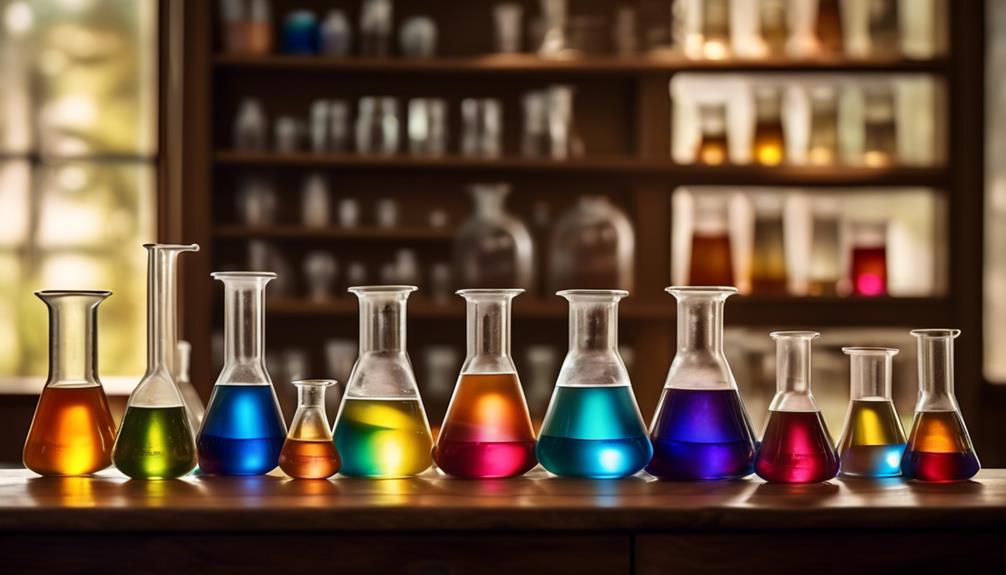
To fully grasp the concept of collective nouns, you need to delve into its specific characteristics and usage in the English language. Collective nouns, you’ll find, are unique in that they represent a group or collection of people, animals, or things considered as a single entity.
Now, you’re likely familiar with common examples such as ‘herd’ for cows or ‘flock’ for birds. But have you ever thought about what the collective noun for beakers might be? Let’s explore this.
In English, the collective noun for beakers is typically a ‘set’ or ‘rack’. For example, you’d say, ‘I need a set of beakers for this experiment’ or ‘Can you bring that rack of beakers over here?’. The choice between ‘set’ and ‘rack’ depends on context and preference.
It’s crucial to remember that collective nouns can be singular or plural, depending on whether you’re thinking of the group as a single entity or as individuals. So, you might say, ‘The set of beakers is on the table’ or ‘The set of beakers are all different sizes’. This flexibility reflects the dynamic nature of language, and particularly of collective nouns.
Origins of Beaker Terminology
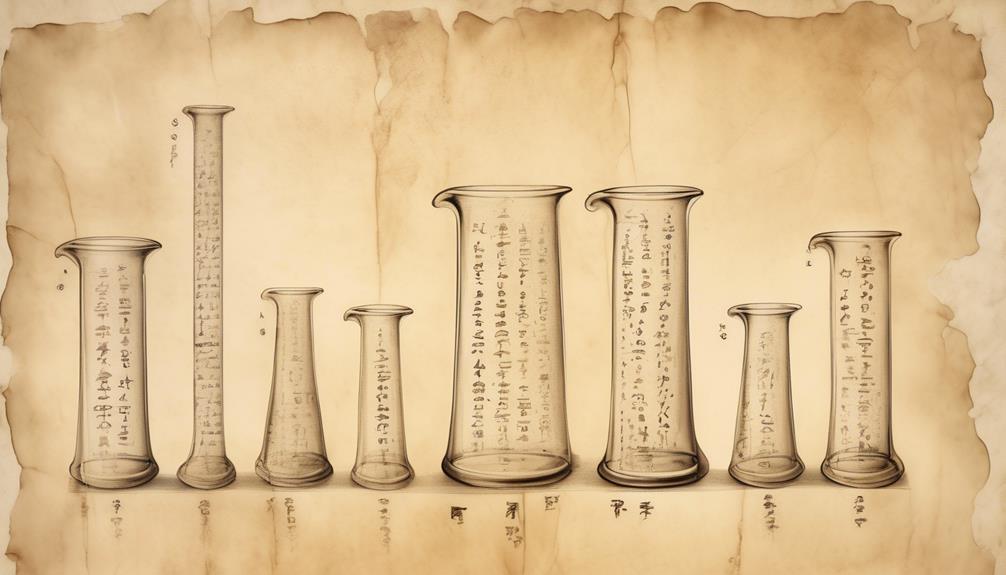
While we’ve examined how beakers are collectively referred to, let’s now explore the historical roots and influences that shaped the terminology associated with beakers.
The word ‘beaker’ has its origins in the Old English word ‘bēce’, which referred to a large drinking vessel. It’s interesting to note how the term’s usage has evolved over time.
The modern scientific use of ‘beaker’ emerged in the 19th century, coinciding with the rise of experimental science. Initially, it was a generic term for any open-top container with a flat bottom. But as scientific methods became more refined, so too did the terminology. Beakers were differentiated from other lab vessels like flasks and test tubes based on their specific characteristics – a wide cylindrical shape, a flat bottom, and a spout for easy pouring.
This evolution of beaker terminology reflects broader shifts in scientific thought and practice. Precision and specificity became paramount, with each piece of equipment having its distinct function. So, when you’re referring to a ‘bevy of beakers’, remember you’re not just using a collective noun, but a term steeped in history and scientific progression.
Collective Noun for Beakers
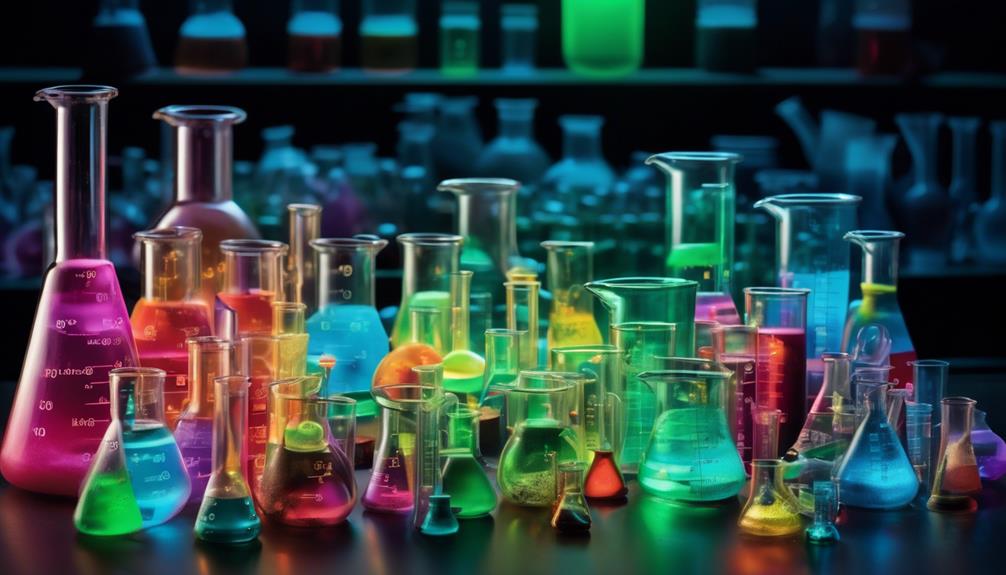
In scientific vernacular, you often encounter a ‘bevy of beakers’, a phrase that pertains to a group or collection of beakers. The collective noun ‘bevy’ is typically associated with a group of birds, specifically quails or larks. However, in the context of laboratory equipment, it’s adopted to refer to a large gathering of beakers.
It’s a linguistic tool that exemplifies the dynamic and flexible nature of language, even within the rigid structure of scientific terminology.
You might wonder why the term ‘bevy’ is applied to beakers. It’s an attempt to humanize the otherwise sterile and impersonal environment of a lab. It creates a semblance of familiarity and comfort in a setting that’s often associated with precision and strict protocols.
Usage in Scientific Contexts
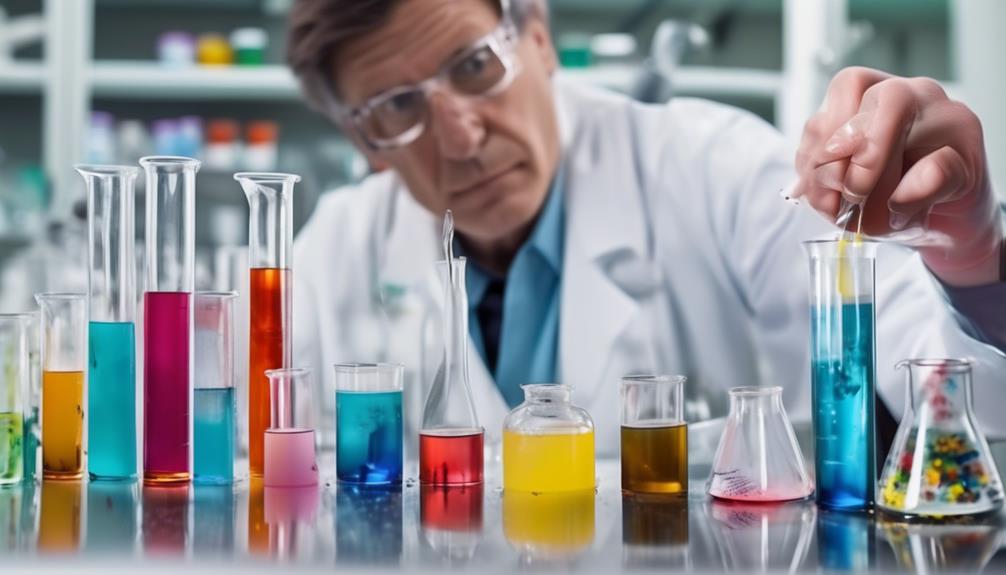
Assuming you’re steeped in the world of science, you’ll likely encounter the term ‘bevy of beakers’ used frequently in laboratory settings, particularly during complex experiments requiring multiple vessels. This collective term is more than just a linguistic choice; it’s a testament to the crucial role beakers play in scientific research.
In a typical lab scenario, you’d call upon a bevy of beakers to conduct multiple tests simultaneously, ensuring efficiency and accuracy. Beakers are indispensable for measuring, mixing, and heating substances. You’d use different beakers for different stages of an experiment to avoid contamination, hence the need for a ‘bevy’.
However, the term isn’t just relevant for physical use. In research papers, the phrase ‘bevy of beakers’ can indicate the complexity or the number of variables in an experiment. It’s a subtle way of communicating that your study was comprehensive and rigorous.
Misconceptions and Clarifications
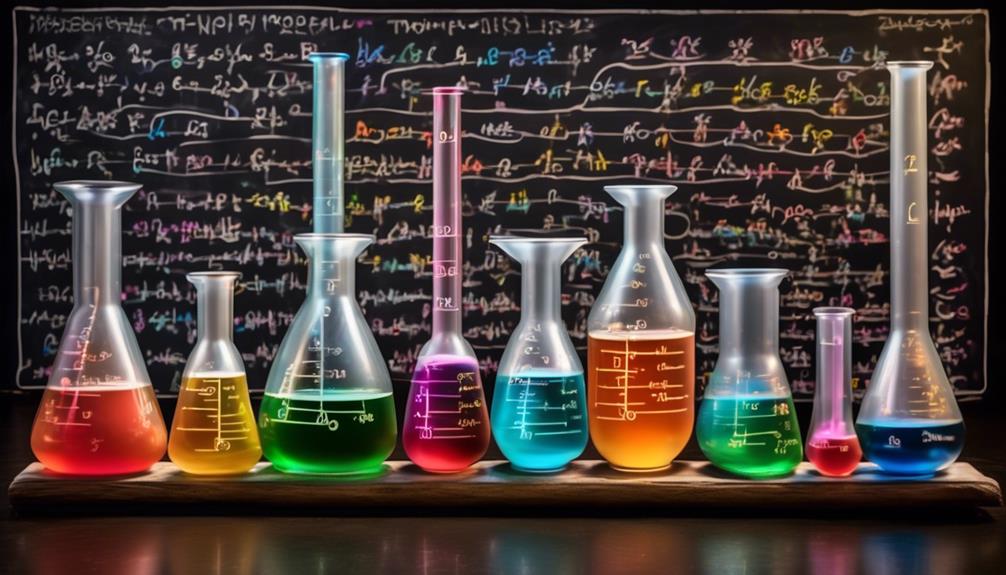
Despite the common usage of ‘bevy of beakers’ in scientific contexts, you may encounter certain misconceptions that need clarification.
Many assume ‘bevy’ only applies to groups of live entities, specifically birds or ladies. In truth, it can reference any collection of similar items. However, it’s important to note that ‘bevy of beakers’ is more informal, often used in casual or educational settings to make the scientific environment seem less intimidating.
Another misconception is that all beakers are identical. You might think a ‘bevy of beakers’ refers to a group of identical lab containers, but they can vary in size, material, and gradation marks. A ‘bevy’ doesn’t stipulate uniformity, merely a collection.
Frequently Asked Questions
How Are Beakers Used in Various Scientific Experiments?
You’re using beakers in scientific experiments quite often. They’re versatile tools, allowing you to mix, heat, and measure liquids.
You’re probably heating a substance over a Bunsen burner, then stirring it with a glass rod. Maybe you’re measuring out precise volumes of liquid for a chemical reaction. Or you’re observing a solute dissolving in a solvent.
In all these cases, the beaker’s your go-to laboratory equipment.
What Are the Different Sizes and Types of Beakers Used in Laboratories?
You’re likely to encounter various sizes and types of beakers in a lab. Standard sizes range from 50ml to 1000ml.
There are Erlenmeyer flasks, often used for titration, and flat-bottomed beakers, great for heating substances.
Low-form beakers are popular for general use, while tall-form beakers are ideal for use with a Bunsen burner.
It’s important to choose the right beaker for your specific needs to ensure accurate and safe experiments.
Are There Other Terms Used for a Group of Beakers in Different Regions or Cultures?
You’re curious about regional or cultural terms for groups of beakers. There’s no specific collective noun for beakers in English. Terms like ‘set’, ‘collection’, or ‘array’ are commonly used.
However, different languages may have unique phrases. Keep in mind, the use of these terms often depends more on the context in which the beakers are used rather than regional or cultural differences.
How Do Proper Cleaning and Maintenance Methods Affect the Lifespan of Beakers?
Proper cleaning and maintenance greatly extend a beaker’s lifespan. It’s crucial to avoid abrasive cleaners that can scratch the surface. You should also handle them with care to prevent chips or cracks.
Always rinse them thoroughly, as residual chemicals can degrade the material over time. Furthermore, using beakers for their intended purpose, and not as makeshift tools, ensures they last longer.
Therefore, good upkeep and usage directly impacts the longevity of your beakers.
What Are Some Famous Scientific Discoveries That Involved the Use of Beakers?
You might be surprised how many scientific breakthroughs you’re familiar with that involved beakers.
Louis Pasteur’s germ theory of disease, Marie Curie’s discoveries in radioactivity, even Alexander Fleming’s discovery of penicillin—all involved beakers in their research.
These are just a few examples, but they demonstrate the invaluable role of beakers in experimental science throughout history.
Conclusion
In wrapping up, you’ve learned that the collective noun for beakers isn’t widely recognized. However, within scientific circles, a ‘batch’ of beakers could be a fitting term.
You’ve also tackled the roots of beaker terminology and how it’s applied in scientific contexts. Remember, while language evolves, it’s crucial to ensure accuracy in technical communication.
Despite misconceptions, precision in naming collections, even for beakers, contributes to clarity and specificity in scientific discourse.



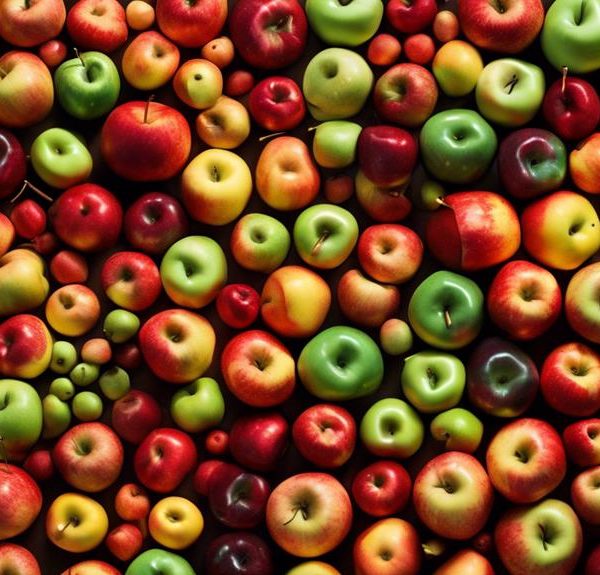
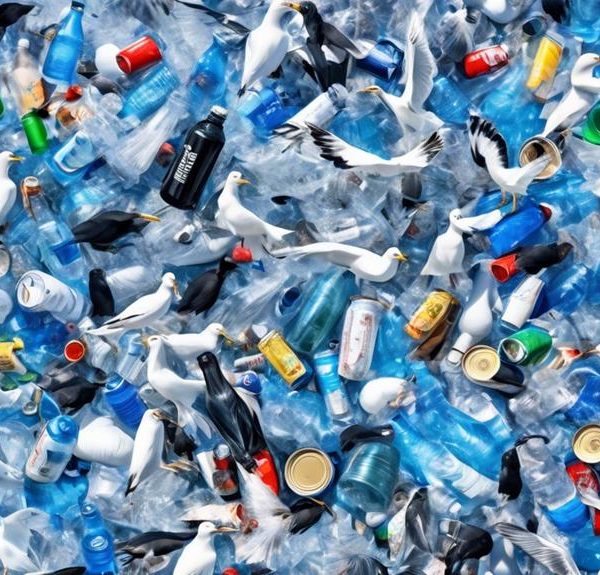
Sign up